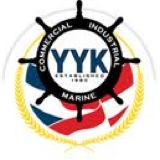Information
-
Audit Title
-
Document No.
-
Client / Site
-
Conducted on
-
Prepared by
-
Location
-
Personnel
-
OPERATOR:
-
Select date
-
VEHICLE ID:
PRE-LIFT INSPECTION CHECKLIST
-
A pre-job safety briefing shall be completed and documented prior to operating the lift.
-
Special emphasis must be placed on maintaining minimum approach distances (MAD) for energized equipment / conductors in the work area.
-
The truck must be set up and operated within proper electrical clearance and grounding requirements. Set-up will provide maximum clearance to energized sources and minimize bucket movement consistent with work to be performed.
-
A Safety Observer shall be assigned and have no other duties while bucket is being moved. Establish clear communications prior to bucket movement to ensure that Safety Observer and person(s) in bucket know movement is to take place.
-
The work activity to be performed is within the safe operating limits as prescribed by the manufacturers’ capacity chart. Special emphasis must be placed on ensuring the aerial device is level within manufacturer’s requirements and the voltage rating of the aerial device.
-
Outriggers and stabilizer when provided are extended and locked. Wheels are a minimum of two (2) inches above the working surface with outriggers extended or wheels are properly chocked.
-
After setup and prior to lifting personnel use the ground lift control to cycle the boom and basket through all of its anticipated working positions to check clearances and proper operation.
-
All employees in the basket are wearing a safety harness with a lanyard attached to a manufacturer-supplied attachment point.
-
Do not rest the boom or basket on a steel structure of any kind.
OPERATOR
-
Comments:
-
By signing below I certify that we have successfully met the requirements of the Pre-Lift Inspection Checklist.
-
Signature of Pre-Lift Inspector:














